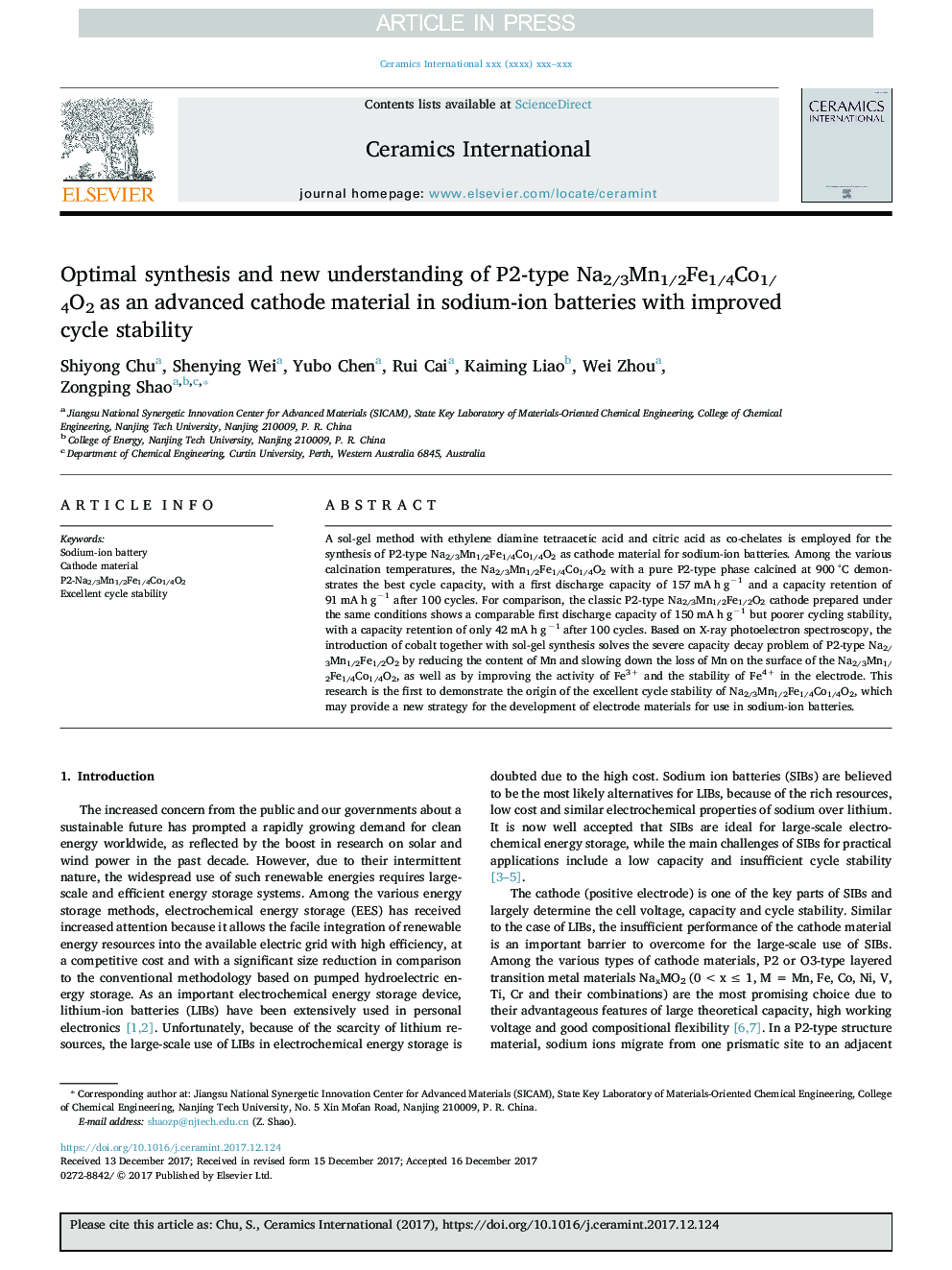| Article ID | Journal | Published Year | Pages | File Type |
|---|---|---|---|---|
| 7888453 | Ceramics International | 2018 | 9 Pages |
Abstract
A sol-gel method with ethylene diamine tetraacetic acid and citric acid as co-chelates is employed for the synthesis of P2-type Na2/3Mn1/2Fe1/4Co1/4O2 as cathode material for sodium-ion batteries. Among the various calcination temperatures, the Na2/3Mn1/2Fe1/4Co1/4O2 with a pure P2-type phase calcined at 900 °C demonstrates the best cycle capacity, with a first discharge capacity of 157 mA h gâ1 and a capacity retention of 91 mA h gâ1 after 100 cycles. For comparison, the classic P2-type Na2/3Mn1/2Fe1/2O2 cathode prepared under the same conditions shows a comparable first discharge capacity of 150 mA h gâ1 but poorer cycling stability, with a capacity retention of only 42 mA h gâ1 after 100 cycles. Based on X-ray photoelectron spectroscopy, the introduction of cobalt together with sol-gel synthesis solves the severe capacity decay problem of P2-type Na2/3Mn1/2Fe1/2O2 by reducing the content of Mn and slowing down the loss of Mn on the surface of the Na2/3Mn1/2Fe1/4Co1/4O2, as well as by improving the activity of Fe3+ and the stability of Fe4+ in the electrode. This research is the first to demonstrate the origin of the excellent cycle stability of Na2/3Mn1/2Fe1/4Co1/4O2, which may provide a new strategy for the development of electrode materials for use in sodium-ion batteries.
Related Topics
Physical Sciences and Engineering
Materials Science
Ceramics and Composites
Authors
Shiyong Chu, Shenying Wei, Yubo Chen, Rui Cai, Kaiming Liao, Wei Zhou, Zongping Shao,
